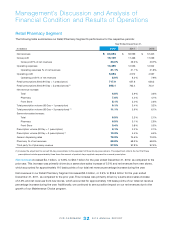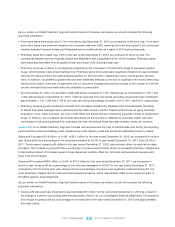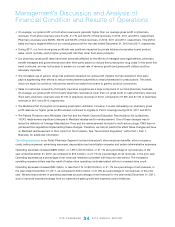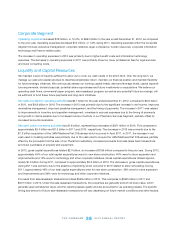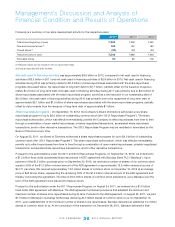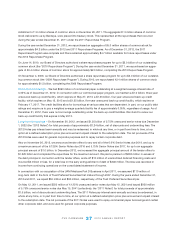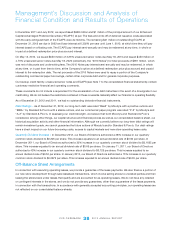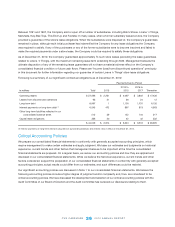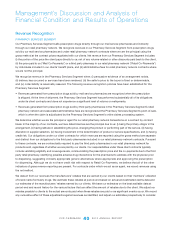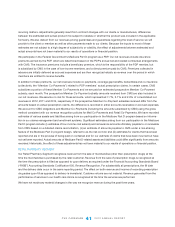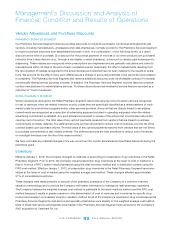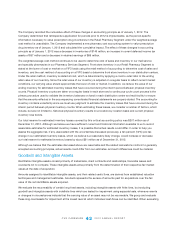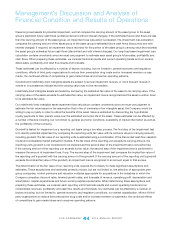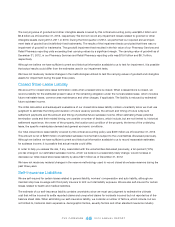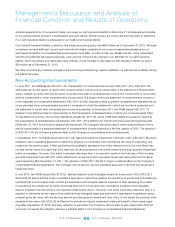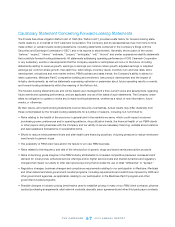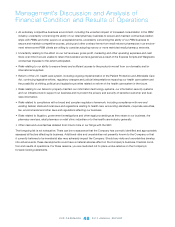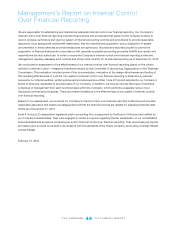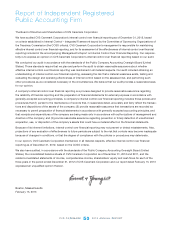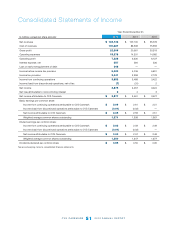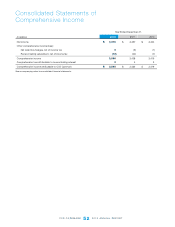CVS 2012 Annual Report Download - page 44
Download and view the complete annual report
Please find page 44 of the 2012 CVS annual report below. You can navigate through the pages in the report by either clicking on the pages listed below, or by using the keyword search tool below to find specific information within the annual report.Management’s Discussion and Analysis of
Financial Condition and Results of Operations
CVS CAREMARK 2012 ANNUAL REPORT
42
Vendor Allowances and Purchase Discounts
PHARMACY SERVICES SEGMENT
Our Pharmacy Services Segment receives purchase discounts on products purchased. Contractual arrangements with
vendors, including manufacturers, wholesalers and retail pharmacies, normally provide for the Pharmacy Services Segment
to receive purchase discounts from established list prices in one, or a combination, of the following forms: (i) a direct
discount at the time of purchase, (ii) a discount for the prompt payment of invoices or (iii) when products are purchased
indirectly from a manufacturer (e.g., through a wholesaler or retail pharmacy), a discount (or rebate) paid subsequent to
dispensing. These rebates are recognized when prescriptions are dispensed and are generally calculated and billed to
manufacturers within 30 days of the end of each completed quarter. Historically, the effect of adjustments resulting from
the reconciliation of rebates recognized to the amounts billed and collected has not been material to the results of opera-
tions. We account for the effect of any such differences as a change in accounting estimate in the period the reconciliation
is completed. The Pharmacy Services Segment also receives additional discounts under its wholesaler contract if it exceeds
contractually defined annual purchase volumes. In addition, the Pharmacy Services Segment receives fees from pharma-
ceutical manufacturers for administrative services. Purchase discounts and administrative service fees are recorded as a
reduction of “Cost of revenues”.
RETAIL PHARMACY SEGMENT
Vendor allowances received by the Retail Pharmacy Segment reduce the carrying cost of inventory and are recognized
in cost of revenues when the related inventory is sold, unless they are specifically identified as a reimbursement of incre-
mental costs for promotional programs and/or other services provided. Amounts that are directly linked to advertising
commitments are recognized as a reduction of advertising expense (included in operating expenses) when the related
advertising commitment is satisfied. Any such allowances received in excess of the actual cost incurred also reduce the
carrying cost of inventory. The total value of any upfront payments received from vendors that are linked to purchase
commitments is initially deferred. The deferred amounts are then amortized to reduce cost of revenues over the life of the
contract based upon purchase volume. The total value of any upfront payments received from vendors that are not linked
to purchase commitments is also initially deferred. The deferred amounts are then amortized to reduce cost of revenues
on a straight-line basis over the life of the related contract.
We have not made any material changes in the way we account for vendor allowances and purchase discounts during the
past three years.
Inventory
Effective January 1, 2012, the Company changed its methods of accounting for prescription drug inventories in the Retail
Pharmacy Segment. Prior to 2012, the Company valued prescription drug inventories at the lower of cost or market on a
first-in, first-out (“FIFO”) basis in retail pharmacies using the retail inventory method and in distribution centers using the
FIFO cost method. Effective January 1, 2012, all prescription drug inventories in the Retail Pharmacy Segment have been
valued at the lower of cost or market using the weighted average cost method. These changes affected approximately
51%ofconsolidatedinventories.
These changes were made primarily to bring all of the pharmacy operations of the Company to a common inventory
valuation methodology and to provide the Company with better information to manage its retail pharmacy operations.
The Company believes the weighted average cost method is preferable to the retail inventory method and the FIFO cost
method because it results in greater precision in the determination of cost of revenues and inventories by specific drug
product and results in a consistent inventory valuation method for all of the Company’s prescription drug inventories as the
Pharmacy Services Segment’s mail service and specialty pharmacies were already on the weighted average cost method.
Most of these mail service and specialty pharmacies in the Pharmacy Services Segment were acquired in the Company’s
2007 acquisition of Caremark Rx, Inc.


